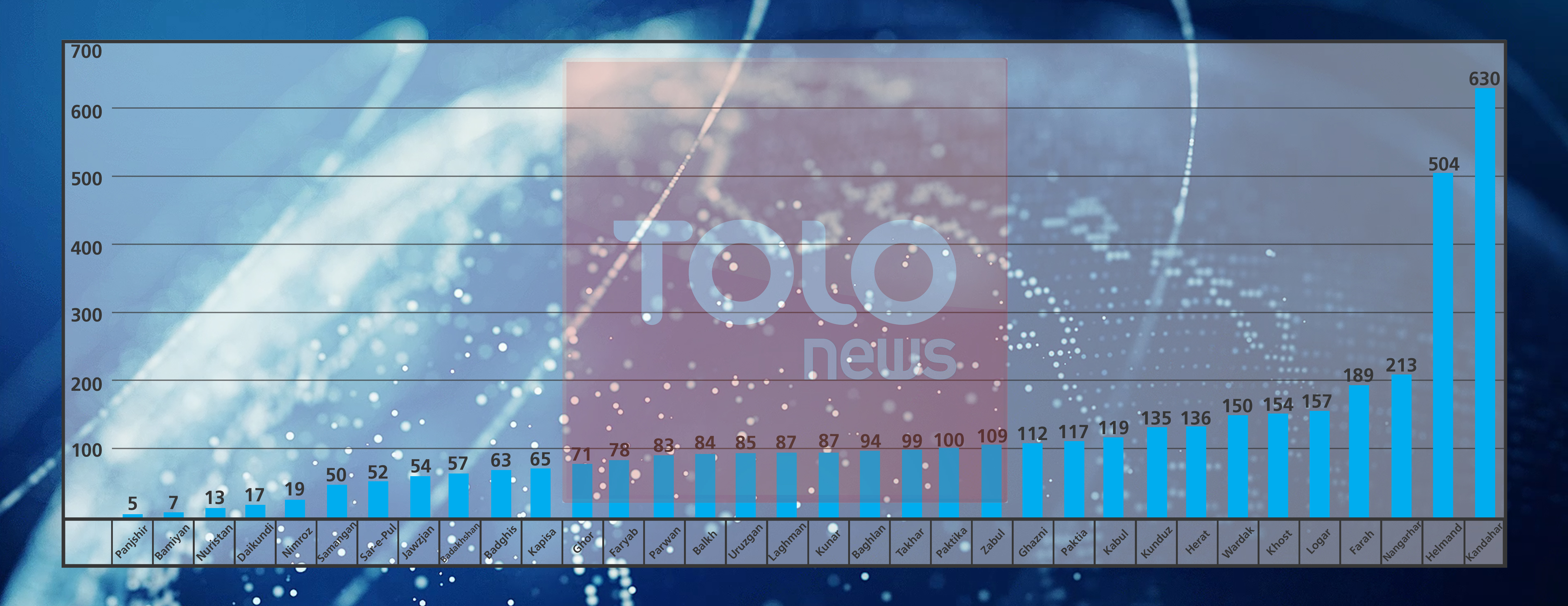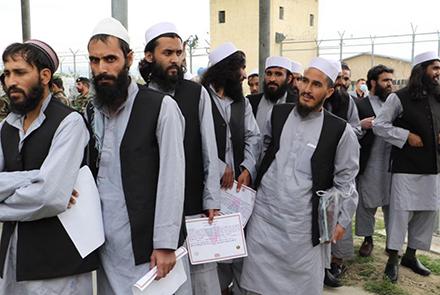A list of Taliban detainees held by the Afghan government shows that most of the inmates are from the four provinces of Kandahar, Helmand, Nangarhar and Farah.
The list seen by TOLOnews shows that the prisoners from all 34 provinces have been released.
The list indicates that the least number of prisoners are residents from Panjshir, Bamiyan and Nuristan.
The list, which was prepared by the National Security Council, shows 5 of the prisoners are from Panjshir, 7 from Bamiyan, 13 from Nuristan, 17 from Daikundi, 19 from Nimroz, 50 from Samangan, 52 from Sar-e-Pul, 54 from Jawzjan, 57 from Badakhshan, 63 from Badghis, 65 from Kapisa, 71 from Ghor, 78 from Faryab, 84 from Balkh, 85 from Uruzgan, 87 from Laghman, 94 from Baghlan, 99 from Takhar, 100 from Paktika, 109 from Zabul, 112 from Ghazni, 117 from Paktia, 119 from Kabul, 135 from Kunduz, 136 from Herat, 150 from Wardak, 154 from Khost, 157 from Logar, 189 from Farah, 213 from Nangarhar, 503 from Helmand and 630 prisoners are from Kandahar province.
Critics see an imbalance in the release of these prisoners and believe that a big number of them are from the Noorzai tribe, which is predominantly from the southern provinces, especially Kandahar.
According to military analyst Zahir Azimi, there may be a strategic reason for such a heavy number of released detainees from the south.
First, he says, the Taliban leader Mullah Hibatullah is from the Noorzai tribe, and they "mostly live in the southern province of Kandahar."
“The second issue is that releasing more people from the Noorzai tribe affects the balance of power in (the Taliban’s) battlegrounds and mostly favors the Durranis (a tribe in Kandahar),” Azimi explained. “The third issue is that the Durranis are considered more developed (than other tribes) in terms of citizenship, it can have a positive impact on the peace process.”
Sources close to the Taliban said there has been progress in recent days on the release of 592 prisoners about whom there are disagreements between the government and the militant group. The Afghan government has so far released at least 4,200 Taliban members, while the Taliban has released 845 detained Afghan forces. The process is intended to be followed by the intra-Afghan negotiations once the government completes the release of 5,000 Taliban prisoners and the Taliban releases 1,000 inmates.
“The Taliban can give an alternative list to the government for those (prisoners) who are not released due to (violating) people’s rights,” said Javid Faisal, spokesman for National Security Council.
“Those who were accused of violating people’s rights I think have been appointed as deputies in Kabul or were given marshal rank against all laws,” said Mawlawi Mohammad Nabi Omari, a member of the Taliban’s office in Qatar.
“There is a lot of progress and there will be more decisions within the next two or three days,” said Faiz Mohammad Zaland, a university lecturer.
The Taliban has blamed the government for creating hurdles for the release of prisoners. The Afghan government has blamed the Taliban for not addressing its commitments towards the peace agreement with the US. The Taliban violence in the country remains high despite efforts by the Afghan government and its international allies to move the peace process forward.
“Kabul says that, for instance, the western countries are not telling them not to release these individuals. This is a clear interference of these countries in the internal affairs of Afghanistan,” said Omari.



